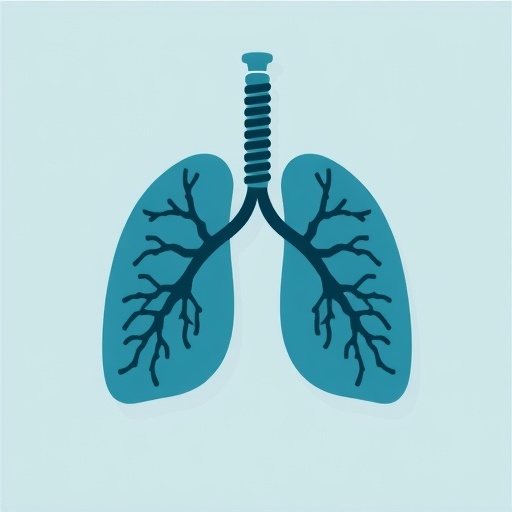New research has emerged shedding light on the cardiovascular risks faced by patients suffering from Chronic Obstructive Pulmonary Disease (COPD) who are treated with long-acting beta agonists (LABA) or long-acting muscarinic antagonists (LAMA). The study, conducted by a team of researchers including Wong, Cheng, and Choo, highlights critical findings that may reshape the therapeutic approaches taken by healthcare professionals in managing COPD, particularly in terms of understanding the implications these treatments have on heart health over time.
Chronic Obstructive Pulmonary Disease is a progressive lung disease characterized by increasing breathlessness, cough, and sputum production. It poses a significant burden on individuals and the healthcare system. The management of COPD often includes the use of bronchodilators; however, the specific types and their long-term cardiovascular implications require deeper investigation. Recent findings indicate that while LABA and LAMA can significantly alleviate respiratory symptoms, they may also carry cardiovascular risks that have not been fully understood until now.
This large-scale, real-world study utilizes patient data spanning various territories. The comprehensive nature of the research allows for a better understanding of the long-term effects that these commonly prescribed medications have on cardiovascular outcomes. The implications of this work extend beyond simply understanding efficacy in symptom management; they touch on critical aspects of patient safety and quality of life improvement as well. For anyone involved in treating COPD, this raises essential questions about assessment protocols and post-treatment monitoring.
In their analysis, the researchers focused on a range of cardiovascular events, including incidents of heart attack, stroke, and other related conditions. Notably, the results indicated that the use of LAMA was associated with varying outcomes compared to those treated with LABA. This discovery could lead to tailored treatment strategies for individuals, potentially improving overall patient management and outcomes in an area often fraught with complications due to overlapping respiratory and cardiovascular diseases.
As the findings underscore the need for caution, they also advocate for the development of individualized treatment plans. Various factors, including age, gender, and the presence of other comorbidities, can play a critical role in determining a patient’s risk profile. A one-size-fits-all approach may no longer be viable in the current clinical landscape where precision medicine is becoming more prevalent.
Moreover, the findings provoke a larger dialogue on the importance of rigorous clinical trials and observational studies in evaluating the safety profiles of medications. Despite the widespread use of LABA and LAMA among the COPD population, there has traditionally been a gap in research focused on their long-term cardiovascular effects, which this study begins to fill. The ethical implications of this research are significant, as they call for a reevaluation of prescribing practices when it comes to patients with concurrent cardiovascular issues.
Importantly, these findings tie into contemporary public health discussions surrounding COPD management in broader populations. With increasing incidences of both respiratory and heart diseases, the interconnectivity between these fields becomes paramount. By shedding light on the hidden risks associated with treatment options, researchers may influence guidelines and recommendations, ultimately steering practitioners toward better decision-making pathways in the treatment of patients struggling with both respiratory and cardiovascular challenges.
Furthermore, patient education becomes critical in this newfound landscape. With greater awareness of the potential risks underlying certain COPD medications, healthcare providers can encourage patients to engage in dialogues about the implications of their treatment choices. This empowerment fosters a sense of agency and involvement, ensuring that patients can play an active role in their management journey.
In summary, Wong and colleagues have opened a crucial conversation regarding the cardiovascular risks associated with LABA and LAMA in COPD patients. As the study garners attention, it has the potential to influence clinical practices, encourage further research, and ultimately enhance patient outcomes. The future of COPD treatment may well depend on how healthcare systems incorporate these findings into ongoing conversations about respiratory health and patient safety.
This research also emphasizes that the ongoing development of new treatment modalities could be centered on these findings. Drug developers may need to consider safer alternatives that mitigate heart risks while effectively managing symptoms. Collaboration between researchers, clinicians, and pharmaceutical companies could catalyze innovations in COPD therapies, leading to safer medications in the long run.
As this study advocates for heightened scrutiny and improved management strategies, it reinforces the need for a systematic approach to treating patients with complex, chronic conditions. Aligning treatment with evolving evidence will not only serve the immediate health interests of patients but also lay the groundwork for healthier futures in communities battling COPD on a broader scale. The ripple effects of translation from research to practice can significantly influence public health perspectives.
The emerging insights from Wong et al. are not just a momentary blip but rather a crucial inflection point for everyone invested in respiratory health. They reveal the interconnectedness of various health dimensions and the importance of prioritizing cardiovascular health when managing respiratory diseases. Addressing this linkage could significantly enhance how medical professionals and patients approach the treatment of COPD, ultimately aiming for a more holistic perspective on patient well-being.
In conclusion, the study advocates for vigilance, a rethink of traditional paradigms, and a concerted effort to place patient safety at the forefront of COPD management strategies. The implications of understanding the nuanced relationship between COPD treatments and cardiovascular outcomes can lead to a substantial shift in therapeutic approaches that benefits a large segment of the population.
Subject of Research: Cardiovascular Outcomes in COPD Patients
Article Title: Cardiovascular Outcomes Among Patients with COPD Prescribed with LABA or LAMA: A Real-World Territory Wide Study
Article References:
Wong, C.K., Cheng, E.C.C., Choo, A. et al. Cardiovascular Outcomes Among Patients with COPD Prescribed with LABA or LAMA: A Real-World Territory Wide Study.
Adv Ther (2025). https://doi.org/10.1007/s12325-025-03375-5
Image Credits: AI Generated
DOI:
Keywords: COPD, cardiovascular risk, LABA, LAMA, real-world study, treatment outcomes.




